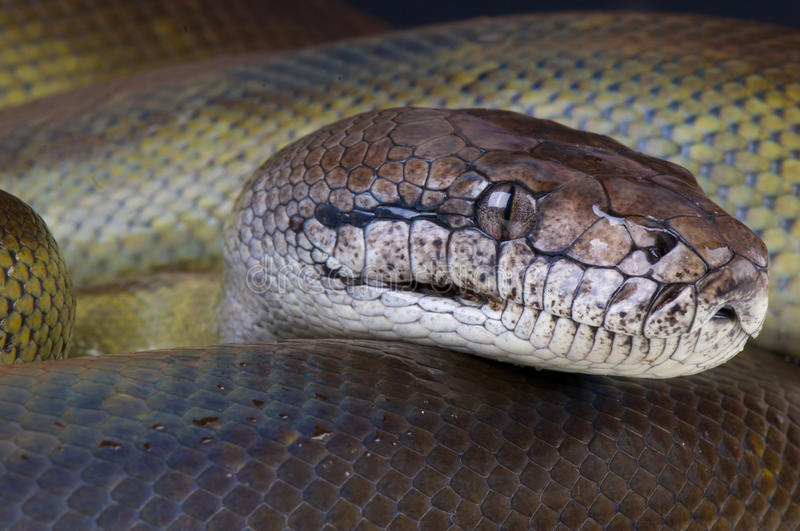ANIMAL: Papuan/Papuan Olive Python Apodora papuana Type of Animal: Python/Boa Habitat: Rainforest, lowland monsoon forest, savanna woodland, savanna Location(s): New Guinea Appearance: Short blunt wide head, vary from dark gray/muddy color to olive shades to dark brown to mustard yellow, younger animals lighter olive while older animals darker olive, darker above & lighter on sides & underneath (often yellowish in these areas), they can change colors from light to dark & back & can display 2 colors at once, fairly thick stocky body Food/Diet: Mammals up to size of wallabies, other snakes (including each other) Status in Wild: Stable Conservation: Breeding in zoos, wildlife centers, & herpetoculture Lifestyle: Solitary Additional Info: Called: Male Female Young: Snakelet Group: Solitary Weight: Male: 25-35 lbs Female: 50-60 lbs Gestation: 3 months Life Span: 20 years Body Length: Male: 9-13 ft Female: 12-16 ft Young: 4 ft Tail Length: 3 ft, same for both sexes Main predators are crocodile monitors, crocodiles, New Guinea/Papuan Harpy Eagles, & each other. Active at night (nocturnal). Like all pythons, they kill prey by constricting/swallowing whole. Only member of Apodora genus. Also known as Irian Python & New Guinea Olive Python. They’re ambush predators. They’re very shy in the wild & often shy in captivity. Equally at home in trees & on ground. Large females can lay up to 20 eggs. Sexually mature at 4 years old. Sometimes hunted for meat/skin. Fun Fact(s): Can wrap 2 items at same time w/ different body parts. These pythons can change color though it’s unsure why-it may relate to mood, it may relate to time of day/surroundings. Often only need to eat once every 3 weeks. Babies/juveniles will display jet-black mouth if disturbed/threatened. While not aggressive, they can have a dangerous feeding response.
